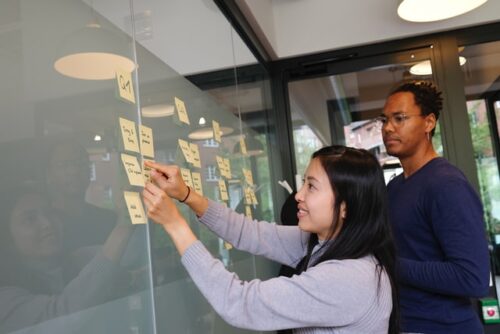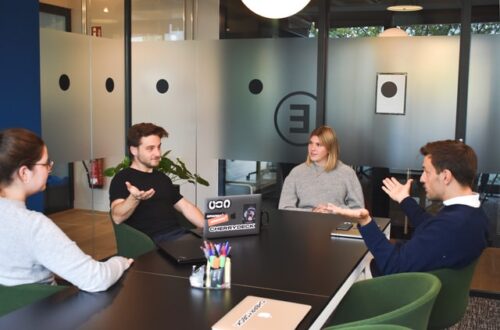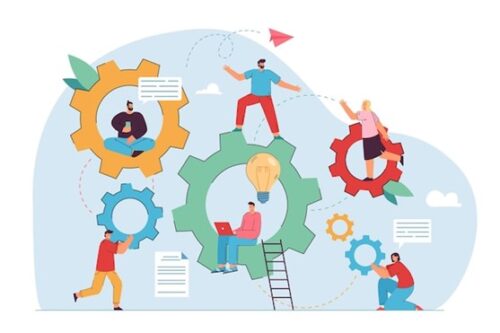In the field of education, it is widely acknowledged that individuals have different learning styles Noerthern Territory. This recognition is particularly important, where diverse cultural backgrounds and indigenous communities contribute to a rich tapestry of learning needs. One tool that has gained popularity in understanding and addressing these different learning styles is the Herrmann Brain Dominance Instrument (HBDI). The HBDI is a psychometric assessment tool that identifies an individual’s preferred thinking style based on their brain dominance. By recognising these preferences, educators can tailor their teaching methods to better suit the needs of their students, ultimately enhancing the learning experience for all. The use of HBDI in the Northern Territory has been instrumental in creating inclusive and effective learning environments that cater to the diverse learning styles of its population. Different people learn differently, you may have noticed it in how your employees interact with your training. Others will shine with their interesting remarks and questions when lectures go on for a long time. There will always be some people who won’t do well on written tests but do well on practical tests. Theoretical concepts are no problem for some, but practical applications aren’t for everybody.
What does each of these types of learners have in common? Learning should leverage their strengths and help them progress, which they all want to do.
To accommodate different learning styles at work, you need first to know how your employees think then learn.
What are the different thinking styles?
For the Herrmann Brain Dominance Instrument, there are four types of thinking. In the HBDI assessment, there are four quadrants of thinking:
Detailed analysis of facts, number processing, logical reasoning are all elements part of the A Quadrant – Analytical
Organising facts, preparing detailed reviews and appropriate planning are the elements of the B Quadrant, which is practical
Relational, interpersonal, expressive, intuitive, and critical is the fourth quadrant in the C Quadrant
Experimental thinking, creative, and conceptual thinking are the attributes that define the D Quadrant
The assessment is psychometric in nature. Focus is on individuals’ preferred ways of thinking. Known as a ‘Whole Brain Model,’ this tool provides insight into our thinking preferences. It illustrates how different thinking styles add tremendous value to organisations and teams by displaying the diversity of different thinking styles.
Thinking and learning at the cutting edge
When understanding a team’s Herrmann Brain Dominance Instrument profile, it can be easier to design effective learning and development programs. A suitable training program for a specific group of employees. As learning and development programs change rapidly today, employees need to change the way they learn in order to gain knowledge and apply it. It is important for employees to be equipped with the tools they need to overcome learning and development challenges. As a result of this type of psychometric assessment, you can gain insight into what kind of learning patterns they exhibit and what their needs are.
The Building Blocks of Training are Cognitive Diversity
By leveraging diversity of thought, our program can boost the velocity and effectiveness of your learning and development programs at scale.
The Individual Thinker Individual Thinkers are the first group to adopt the Whole Brain® Model, using a digital self-assessment tool. By internalising Herrmann’s Whole Brain® Thinking at the individual level, an organisation is better prepared to realise the full business value of Herrmann’s solutions. We refer to individuals as Thinkers in order to emphasise the role that the individual’s thought process plays in defining the business value of an organisation.
Pairs of Thinkers – Individual Thinkers are essential to the formation of Pairs; however, it is at the pair level that collaboration, communication, and alignment become significant functions for improving business value. A Thinker Pair may consist of a manager and a direct report, or it may consist of a salesperson and a prospect. Anywhere two individuals can deliver more than they can on their own, our digital application and guide are available to empower self-diagnosis and optimisation.
Teams – In most organisations, teams are responsible for achieving organisational goals. As the goal owners, management is responsible for the performance of their teams. Providing dashboards for teams and sub-teams to measure effectiveness and identify obstacles, we work directly with management. At this level, application modules serve as a means of aligning work processes with the objective of increasing efficiency and productivity.
The Organisations – The organisation can accomplish only what it can accomplish through its teams. Therefore, we begin at the individual level and work our way up. By developing internal capabilities in innovation, production, employee engagement, and generating business synergies in pairs and teams, a Herrmann-powered organisation will have these capabilities, without consulting assistance. A major benefit of implementing the Whole Brain® Model at the organisational level is that you will be able to gain more insights.
Using Whole Brain® Thinking, the team can better understand how they think, how their thought processes influence their learning, and how they can relate more effectively to others. By using HBDI, they can communicate both with people who think the same as they do and with those who think differently from them.
Understanding their thinking is crucial to improving productivity, communication, collaboration, and innovation because it influences everything we do.
Adapting to different learning styles at work
There is a good chance that your team includes members of each thinker category.
Additionally, everyone has different learning styles, and most likely do. The preference of one group of employees may be to read a product manual, while the preference of another group could be to watch a video or participate in role-playing.
Invest in a combined learning approach
Trying to accommodate all four thinking styles in the workplace may feel like a study in futility, but the solution is simple. The best thing you can do is use combined learning, aka combine techniques from each one of the four categories.
Various learning modules can be included in one learning module. These modules can consist of instructor-led sessions recorded, with transcripts available, microlearning videos with subtitles, infographics, reading materials, simulations, and collaborative assignments. Consequently, there will be something for everyone, and no one learner type will have an unfair advantage over another.
Engage learners by focusing on their needs
Training a large team often means not knowing each individual’s learning style. The one thing that is certain is that people engage with training content according to their preferred learning styles. As a result, they are more likely to learn when they are engaged. Ensure learners can express themselves and participate actively in your training. We recognised the need to provide flexible, focused, and customised training services that cater to the diverse thinking styles of Northern Territory businesses, communities, organisations, and key stakeholders.
Every individual should have access to training, regardless of their learning style. It is important to note that providing inclusive learning is not just something you check. It is an integral part of your success story.
You should be able to access the right data and reports to ensure that your training is effective for all learning styles in the workplace. Using the data, you can identify where your employees struggle, what they learn following a training course, and how much of the information they retain over time.
Creating all those elements that accommodate different learning styles, from microlearning videos to infographics, requires the right tools.
Essentially, you need learning and development programs that facilitate this inclusive learning process.
Conclusion
Understanding that different people learn differently is crucial for effective training and development in any organisation. As a business owner or manager, you may have noticed that your employees interact with training programs in various ways. Some individuals thrive during lectures and actively engage with interesting remarks and questions. On the other hand, there will always be those who struggle with written tests but excel in practical assessments. While theoretical concepts come easily to certain individuals, they may struggle when it comes to applying them in real-life situations. Recognising these diverse learning styles is essential for creating a comprehensive and inclusive training program.
Different learning styles Northern Territory, it becomes even more important due to the unique cultural and geographical characteristics of the region. The Northern Territory is home to a diverse population, including Indigenous Australians with distinct learning preferences and needs. By acknowledging and accommodating these different learning styles Northern Territory differences, businesses operating in the Northern Territory can maximise organisational learning and development efforts.
One approach that can aid in understanding and addressing different learning styles Northern Territory, is the Herrmann Brain Dominance Instrument (HBDI). This tool categorises individuals into four thinking preferences: analytical, practical, relational, and experimental. By identifying an individual’s dominant thinking style, trainers can tailor their teaching methods to better suit their audience. For example, those with an analytical preference may benefit from logical and structured presentations, while those with a relational preference may respond better to group discussions and collaborative activities.
In conclusion, recognising and accommodating different learning styles Northern Territory, is crucial for effective training and development in any organisation. This is particularly important in the unique context of the Northern Territory, where diverse cultural and geographical factors come into play. By utilising tools like the HBDI and being mindful of local government laws, businesses can maximise their organisational learning and development efforts and create an inclusive and compliant training environment.
WHS and Training Compliance Solutions is a significant provider of training programs, mental health and organisational learning and development services in the Northern Territory. Through WHS and Training Compliance Solution, we provide services to organisations that support people, enhance their skills, and advocate for efficient and productive training in the Northern Territory. By supporting Northern Territory businesses, we encourage growth, attract investment for employee development, and promote growth.
Assisting businesses and the Northern Territory to maximise organisational learning and development and raising awareness of local government laws on training and development is part of what we do. We also offer elearning courses.
We offer our services across urban, rural, regional and remote workplaces.
It is our goal to empower employees with the knowledge and skills to achieve a happy and productive life, where potential is realised through opportunity and choice, and where the vulnerable employees are protected, skills are advanced, and cultural differences are respected.












